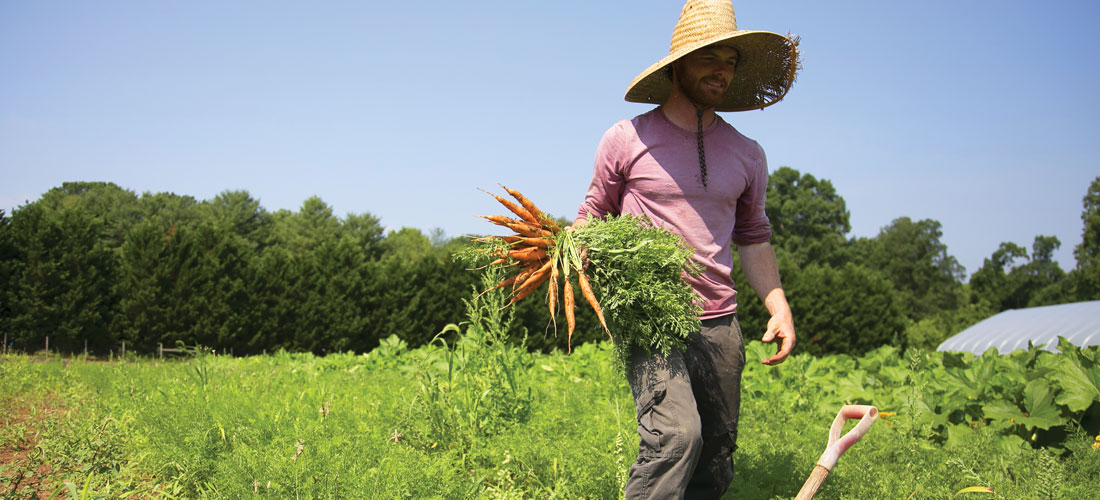
The Art Of The Farm
Aubrey Cupit embraces an ancestral call of the land with 21st-century know-how
By Maria Johnson • Photographs by Brandi Swarms
Like any good Millennial, 31-year-old Aubrey Cupit appears to be biologically attached to his cell phone.
He has an Instagram account and a Keurig coffee maker.
He favors long-sleeve T-shirts, and his short auburn hair descends to a rusty mustache and beard.
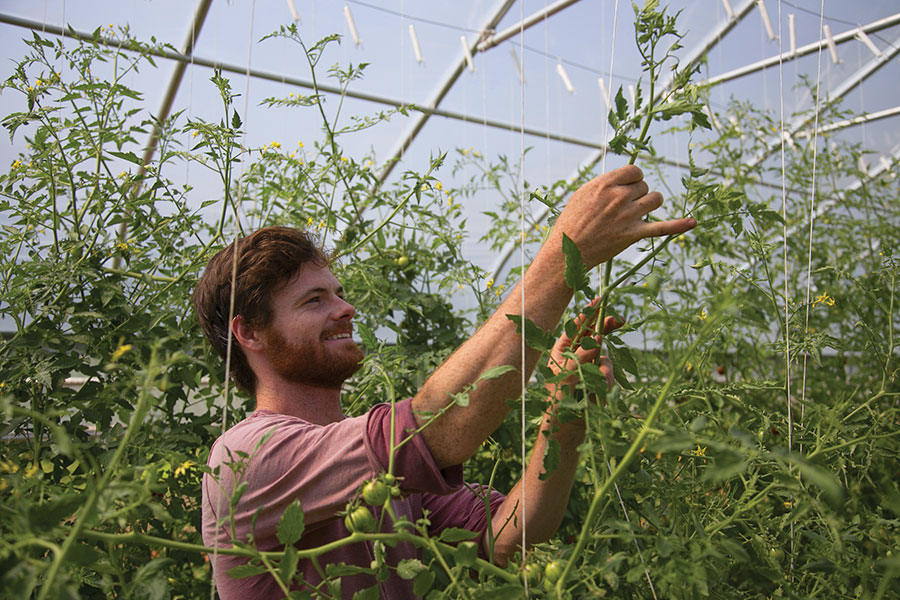
You could envision him loping down the streets of Charlotte or New York City, as many of his former high school and college classmates do.
But you probably won’t see that — unless he’s visiting — because Aubrey Cupit is a farmer.
A small-time, independent, one-man-show farmer.
A get-up-with-the-sun farmer.
A ground-hog-cussing, weather-watching, dusty-jeans-wearing, worn-out-by-Saturday-night-and-ready-to-sleep-in-until-8-on-Sunday-morning farmer.
He owns 9 acres in northwest Guilford County and works two of those acres to make salad, essentially. He raises leafy greens, tomatoes, herbs, carrots and a smattering of other vegetables.
At the moment, he’s heavy into broccolini, that leggy, small-headed cousin of broccoli. Also, he’s getting into cauliflower, which is trending now. Kale is dead. You heard it here first.
He sells to local restaurants and to the general public at the Greensboro Farmers Curb Market. He also peddles produce from a roadside stand at the mouth of the gravel driveway to his land.
Gate City Harvest, that’s his place on Pleasant Ridge Road in Summerfield. As the crow flies — which it actually does out here — it’s very close to where Cupit grew up, in The Cardinal, a 1980s neighborhood molded around a golf course, swimming pool and tennis courts. In other ways, it’s oh-so-far away from the childhood of a guy who chose to go back to the land he never had.
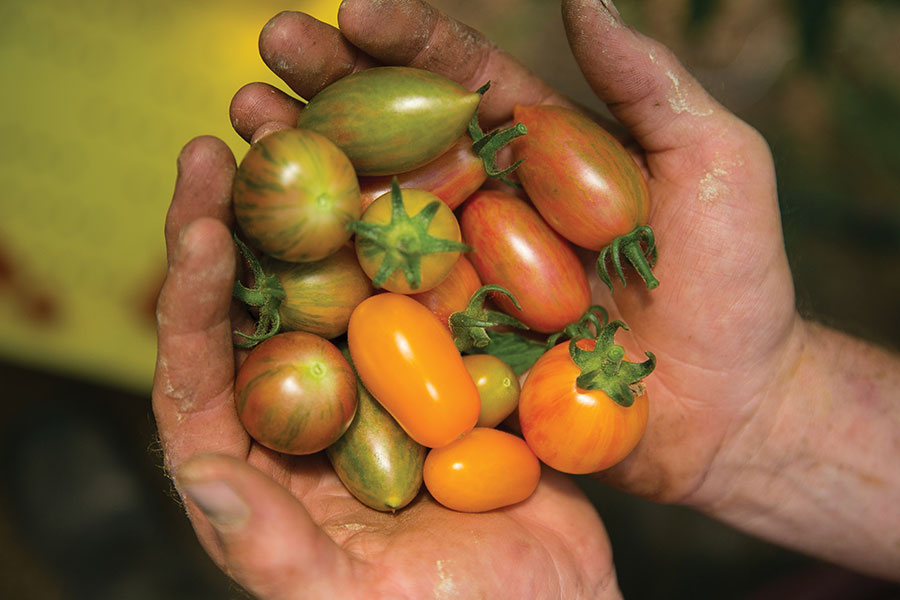
Aubrey Cupit (rhymes with Muppet) was a typical suburban kid. He kicked soccer balls and slugged baseballs on well-groomed fields. He played first-generation Xbox video games. He loved Taco Bell Cinnamon Twists. In middle school, he jettisoned sports for art and photography. He painted watercolors to give to his mom on Mother’s Day. He drew every one of North Carolina’s seven lighthouses.
“My brothers had bigger personalities than I did,” says Cupit, who was a fraternal triplet and one of four boys growing up. “I was more introspective.” No one grew vegetables at home, but Cupit’s mom, Sharian, was an avid landscape gardener. She tended a beautiful yard.
Cupit didn’t notice.
He went to UNCG to study art. His junior year, he needed an elective. He took one that sounded interesting and relatively easy: “Religious Traditions and Care of the Earth.” The lecturer was Charlie Headington, an expert on permaculture and sustainable gardening. Headington talked about how religions viewed the Earth differently — some as a thing to be ruled, some as a thing to be revered — and how that played out.
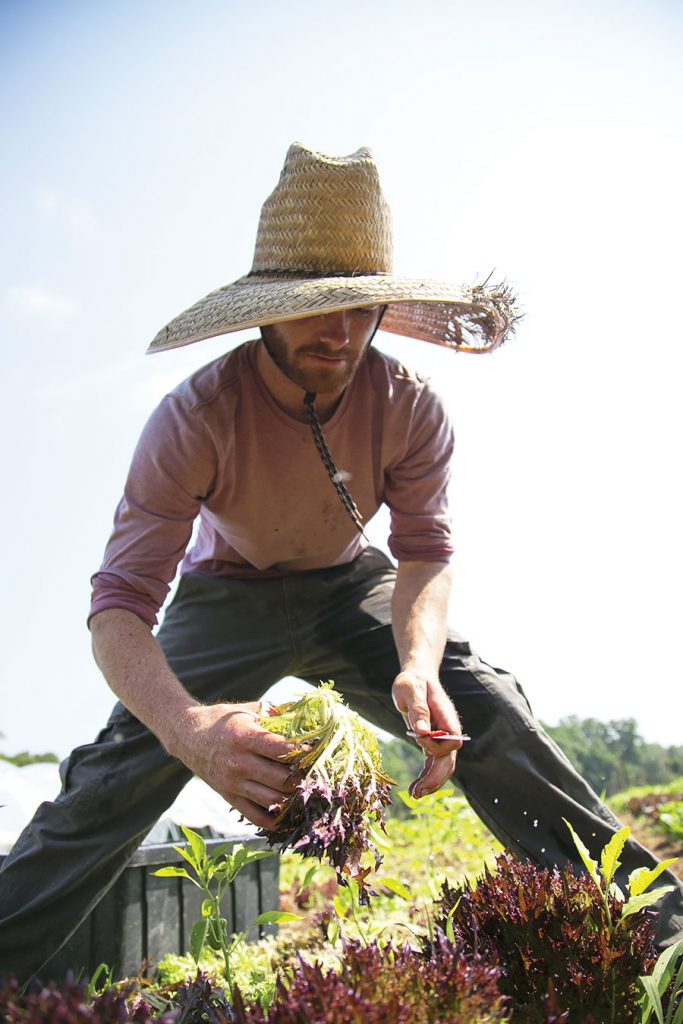
The ideas fell on fertile soil in the mind of the young artist, who threw himself into writing papers for the class. The essays jumped out because they went beyond the minimal requirements. “You can tell people’s comfort levels with ideas by how closely they stick to the guidelines,” Headington says. “Aubrey’s a person who feels comfortable with intellectual discussion.”
Cupit supported his arguments with ideas he’d read about elsewhere. “That’s what a teacher really enjoys — having a person with an original mind. I think that really comes from his art background,” says Headington. Before the semester was up, he suggested that Cupit intern in the gardens at Greensboro Montessori School, which Headington designed and maintained.
Cupit appreciated the offer but let it slide.
That summer, Headington ran into Cupit in the store where Cupit worked, Video Review on Battleground Avenue, a now-defunct touchstone for local movie buffs.
Headington pitched the internship again. “Aubrey was taking my money, and I said, ‘Well, hey, how about it? Are you interested?’” Headington remembers. It wasn’t much, that second offer, but it was enough to nudge Cupit’s life down another track.
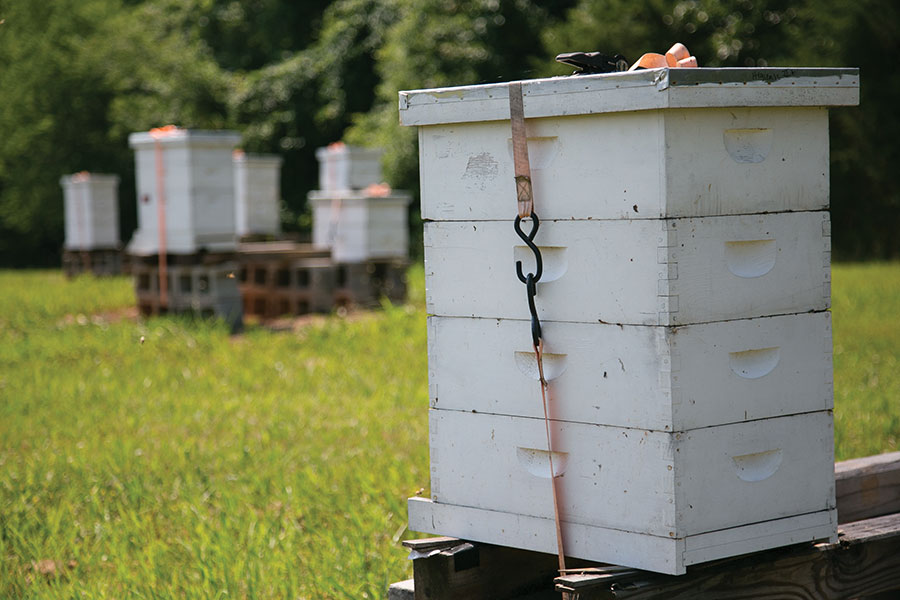
He didn’t become a farmer overnight. First, he wandered in the desert. Correction: tomato patch. He put in sweaty hours at the Montessori gardens, digging out tangles of Bermuda grass, a maddening chore. He didn’t mind. “It felt good to be a part of something bigger,” he says.
He progressed to planting. He learned the underpinnings of permaculture, a way of growing that mimics nature and minimizes human intervention. When it works well, Cupit says, permaculture yields food that is healthier and cheaper than food that comes from high-input agriculture.
Cupit took a degree in fine art, but he kept his hands in the dirt at Montessori — where he still manages the garden and teaches part time — and he signed on at Whitaker Farms in Climax, a large grower of strawberries and greenhouse tomatoes.
Under the tutelage of Faylene and Richard Whitaker, he toiled in the greenhouses and worked their stall at the Piedmont Triad Farmers Market on Sandy Ridge Road. Faylene schooled him on the psychology of the market.
“She would always say, ‘Pile ‘em high, and watch ‘em fly.’ If you have a few tomatoes at the end of the day, you’ll never sell them. People will not buy the last ones. Psychologically, we respond to copious amounts, not skimpy stuff,” says Cupit.
He gleaned more from Daniel Woodham of Greensboro’s NIMBY (Naturally in My Backyard) Gardens. Cupit watched Woodham woo customers by waving bouquets of fragrant herbs at the Greensboro Farmers Curb Market. “He’d be like, “Hey! You know you want some of this basil!’” Cupit recalls. “You couldn’t help but talk to him. He’s a very charismatic guy. He kind of helped to bring me out more.”
Cupit, who describes himself as a “book farmer,” supplemented his education by reading. He digested The Market Gardener, by Jean-Martin Fortier, and two volumes by Eliot Coleman: The New Organic Grower: A Master’s Manual of Tools and Techniques for the Home and Market Gardener, and Four Season Harvest: Organic Vegetables from Your Home Garden All Year Long.
Cupit loved the conviction that saturated those pages: that you don’t have to farm big to be successful. Small, well-managed, Earth-friendly farming could work. It was working. The practitioners weren’t getting rich, but they had comfortable lives. They could support families. They had enough.
And that would be enough for Cupit. It was a long germination, but at the end of five years, he was ready to be transplanted to the field.
For generations, farmers have come into land by inheritance. But, as family-owned acreage has dwindled, the farmers of Aubrey Cupit’s generation have come into land by other means, namely Zillow and Trulia. Starting at about age 25, Cupit combed real estate websites, looking for a few acres where he might start his own farm.
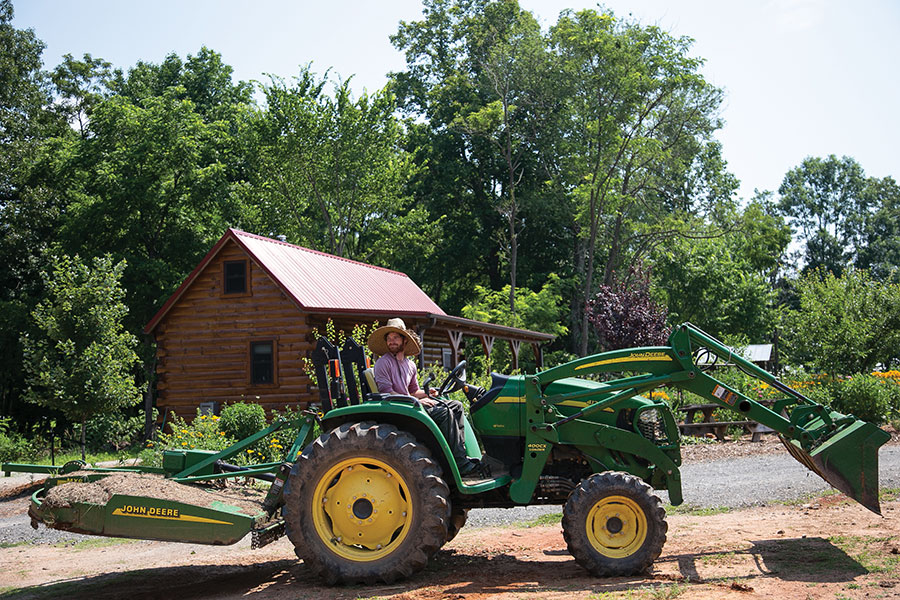
“I was just dreaming, but I knew that it would happen,” he says. He looked into a couple of listings, but nothing seemed right. Then, his grandmother, J’Nell Hofstetter, answered her landline. “I understand your grandson is looking to farm,” the caller said. It was Elaine Pegram, a former neighbor on Pleasant Ridge Road, where Hofstetter had grown up on a farm. The Pegrams had a few acres to spare. They could sell to developers anytime they wanted to — but they didn’t want to.
Hofstetter alerted Cupit, whose mother and father helped him to secure a loan. Thanks to family, Cupit was in business, right across the blacktop from where his great-grandfather, Clyde Huff, had raised tobacco, corn and hogs. Cupit never knew Huff, but his mother tells him that Huff fished the Pegram pond behind Cupit’s house. He spent time in the barn that now belongs to Cupit. “I think about it a lot. Where did I get it from? How did it all come about, this passion? My mom always tells me I remind her of her Pawpaw Huff,” says Cupit. “I don’t know how I feel about religion, but it does make me think sometimes that there is some kind of art to this — something out of our control.”
Because Cupit’s operation is small, so is most of the equipment he uses day to day: a hand tractor, which is basically a motor with wheels and a place to attach implements; a wheel hoe, and a broad fork, which Cupit grabs at the cross bar, stabs into the dirt and rocks back and forth to loosen the soil before planting.
Since the initial preparation of his land, he has avoided tilling, a costly procedure that stirs up weed seeds and aerates microorganisms, causing them to gobble nutrients and deplete the soil. Cupit brags that he can turn over a shovel of dirt in his field and find earthworms, a sign of healthy soil.
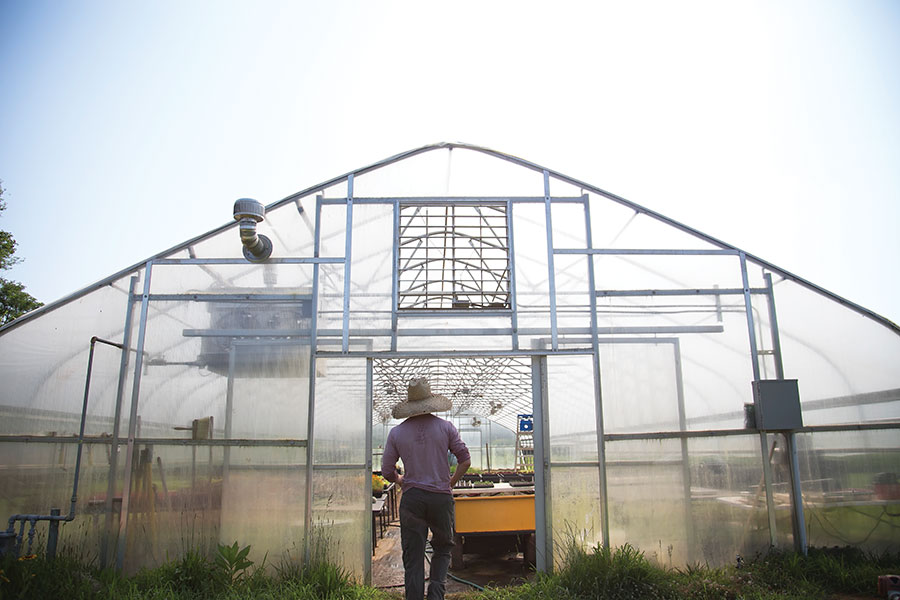
He doctors the dirt sparingly. His fertilizers and soil conditioners are composted horse manure, mineral dust, green sand, feather meal and bone meal. For pesticides, he uses neem oil, chrysanthemum oil and bacillus thuringiensis.
Cupit, the farmer, is still very much the artist. You can see it in his insistence on quality materials and in his devotion to scale, He started out small, putting into production only two of his 9 acres. He spent the first year preparing the soil, an oasis of well-drained sandy loam in a region heavy with clay. The ground, once home to strawberries, wheat and tobacco, had lain fallow for 20 years, the perfect prescription for soil to rest and rejuvenate.
Cupit plowed, disc-harrowed and then seeded with clover and rye. He watched as a fresh, green blanket covered the ground. He plowed it under and disc-harrowed again. He planted his first crops in the fall of 2014. “It was profitable from the beginning,” he says, noting that farmers generally sink their profits into improvements, which he has.
Last year, he added a vegetable-washing station and a walk-in cooler to an old barn beside his new 350-square-foot log cabin. A crew of Amish builders raised the one-room shell and topped it with a red tin roof. Cupit plumbed and wired the cabin by himself. “I’m kind of a YouTube carpenter and electrician,” he says. “It was what the budget required, and I knew I didn’t want to live big. I wanted to be simple.”
Within view of his front porch, the ground bristles with rows of vegetables that change, like garments, on a seasonal wheel. Beets, collards, kale, radishes, lettuces, broccolini and carrots — sweet, warm-colored darts that thrive in the sandy soil — emerge in the sweatshirt weather of spring and fall. Yellow squash, cucumbers, tomatoes, onions, green beans, peppers and eggplant flourish in the sleeveless heat of summer. Sweet potatoes, winter squash and cauliflower store sunlight as hats and gloves appear again.
Cupit extends the growing seasons of his bestsellers with two heated greenhouses and two moveable caterpillar tunnels.
“We push lettuce, tomatoes and cukes as much as we can — at least 10 months,” he says. “You make more money when you’re the only one who has them.” Many of his tomatoes will spend their lives in a greenhouse, growing on twine trellises in the “lower and lean” method that he learned at Whitaker Farms. The practice allows vines to stretch 10 feet or more from one spot in the ground. As each vine grows, Cupit lets out the twine from an overhead spool and slides the spool along a wire. The diagonal curtain makes the fruit easier to pick.
Cupit might be a throwback to old-timey truck farmers, but he embraces current science, technology and ag-fashion, if there is such a thing. He owns a shiny green John Deere 4120, which he uses to mow and move manure, but you won’t find this farmer advertising tractors with a baseball cap. Instead, he wards off skin cancer by wearing the kind of broad-brimmed straw hats favored by West Coast lifeguards. He buys the sloping hats on Amazon. He slips his feet into Mucksters, low-cut rubber garden boots, not brogans. His Levis bear the telltale outline of a cell phone carried in his front pocket. He consults it often.
Someday, he’d love to use his iPhone to control irrigation and move his greenhouse walls for optimum heat and light. Controlled growing environments will become more important, he believes, as global warming causes more extremes in weather.
He expects that, one day soon, phone apps will allow people to order local produce and schedule pick-up or delivery. All of this would increase the margin of error in farming, which is especially important for small operations like Cupit’s. His labor pool consists of him and his mom, who is retired from Burlington Industries and visits the farm almost daily. She mows, washes and packs produce, and minds the roadside vegetable stand. “She wants to see me succeed, and she loves farmwork,” says Cupit. “I think she’s proud to see the evolution of the business.”
Cupit’s commercial customers are happy with the results. Jody Morphis, who with his wife, Anne Marsh, owns Blue Denim, a Cajun-Creole restaurant on South Elm Street in Greensboro, has been buying produce from Cupit since they met a year ago at a Greensboro Farmers Curb Market fundraiser featuring locally sourced bacon-lettuce-and-tomato sandwiches. “I think his tomatoes won Favorite Tomato,” says Morphis, who buys nearly all of his produce from Cupit now.
“He’s definitely my favorite farmer to deal with, first of all because he’s growing great stuff, and he has a great personality. Most farmers aren’t able to go out and shoot the breeze with people. A lot of the older farmers are men of few words.”
Cupit’s prices don’t hurt. “Aubrey’s prices are better than anybody’s,” says Morphis.
Cupit’s other restaurant customers include White and Wood, Cafe Europa, Table 16 and Jerusalem Market in Greensboro, as well as Michelle’s Kitchen & Table in Burlington.
Twice a week, Cupit delivers produce to them in his 1998 Ford pickup. Twice a week, he carries his produce to the Yanceyville Street curb market. Most weekdays, he works in the gardens and classrooms of the Montessori school. That’s when he’s not tending his own farm.
His early-to-bed, early-to-rise lifestyle exacts a cost: limited opportunities to socialize.
“I have to say ‘No’ a lot,” the young bachelor says with a rueful smile. Many people his age have no clue about the gritty realties of farm life, which Cupit is quick to list. “It’s dirty. It’s hard. It’s hot. You’re in the sun. You’re always cutting yourself. About once a month, you want to quit, but you just have to wait until the next day,” he says.
He finds solace in online communities of other Millennial farmers. They might be as rare as hen’s teeth, but they find each other on Facebook and Instagram. They share advice and photos of what they’re growing.
Cupit’s generational peers run Fair Share Farm in Pfafftown; Pine Trough Branch Farm in Reidsville; Mighty Tendril Farm north of Hillsborough; and Sugar Hill Produce, also north of Hillsborough.
While they’re eager to scratch out a living, Cupit says, he and his young agrarian friends believe there’s more to life than accumulating titles and dollars for themselves. They want meaningful work, he says, and they’re finding it in the ground beneath their feet.
“There’s something about taking care of this dirt we have,” he says. “If you have the itch and the passion, it’s worth it.” OH
For more information, go to gatecityharvest.com; @gatecityharvest on Instagram; or facebook.com/gatecityharvest/.





